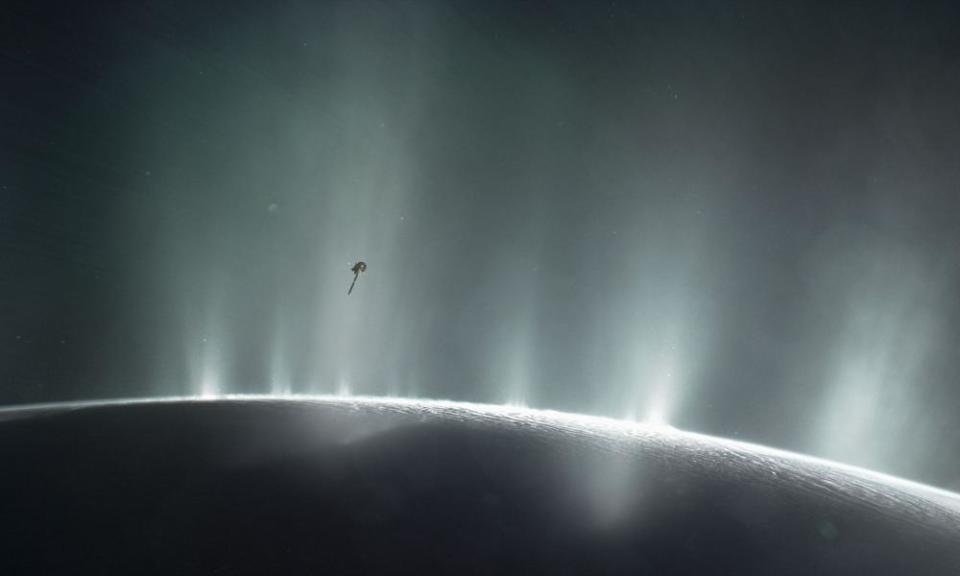Cassini spacecraft finds possibility of alien life, then runs out of fuel
Nasa artist impression of the Cassini spacecraft diving through the Enceladus plume.Photograph: NASA/JPL-Caltech/PA
Could there be life in our own solar system?
This is the question posed by the discovery of hydrogen gas erupting in plumes from Saturn’s moon Enceladus, indicating the likely existence of an energy supply for microbial life.
The presence of hydrogen, detected by the Cassini spacecraft and announced by Nasa on Thursday, is seen as tantalising evidence that in the ocean beneath the moon’s icy surface chemical reactions are taking place that are strikingly similar to those that occur at hydrothermal vents on the Earth’s ocean floors.
In the fissures of the Earth’s oceans, a process called serpentinisation produces hydrogen when salty water reacts with hot rocks. This is what allows microbes, which use hydrogen as a source of chemical energy, to thrive in the ocean depths, raising the question of whether equivalent biology might have emerged on Enceladus.
“Although we can’t detect life, we’ve found that there’s a food source there for it. It would be like a candy store for microbes,” said Hunter Waite, programme director for the space science and engineering division at the Southwest Research Institute in San Antonio and lead author of the Cassini study.
Based on the observed concentration of the hydrogen in the plumes, scientists calculate that the hydrothermal activity on Enceladus produces more than enough energy to sustain a hypothetical colony of alien microbes.
“Enceladus is a mysterious enigmatic object that now shows it has all of the ingredients for life, which is why scientists are so jazzed about the discovery,” said Sara Seager, a planetary scientist at MIT. “Hydrogen gas sets up a way for life to extract energy from chemistry – a main way microbes exploit energy to live here on Earth.”


 Yahoo News
Yahoo News 